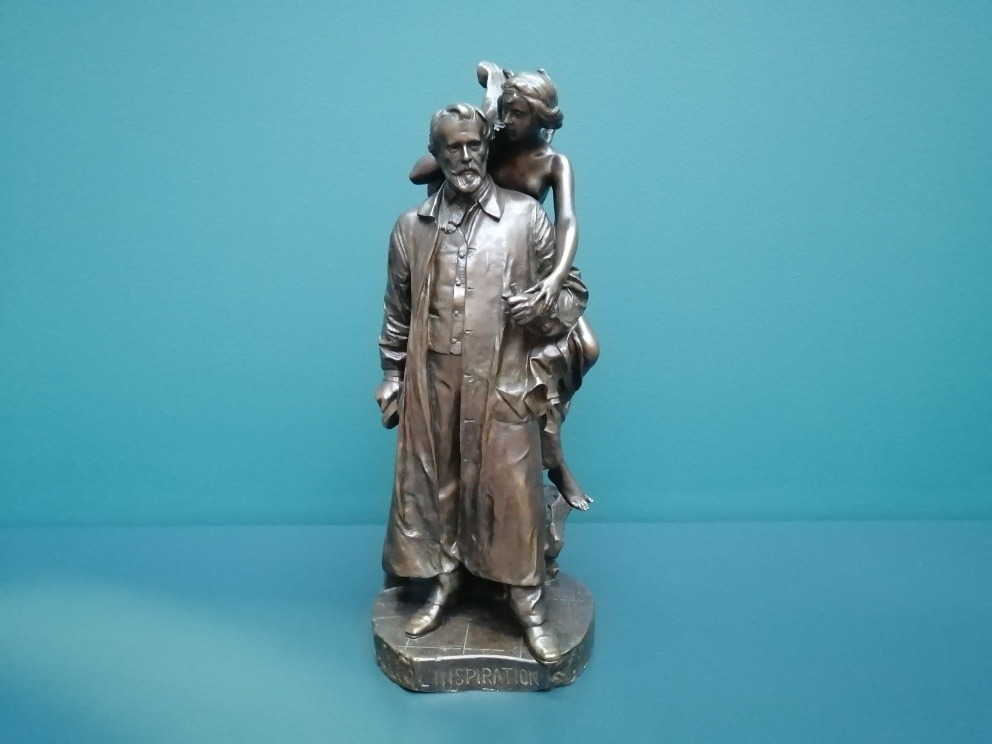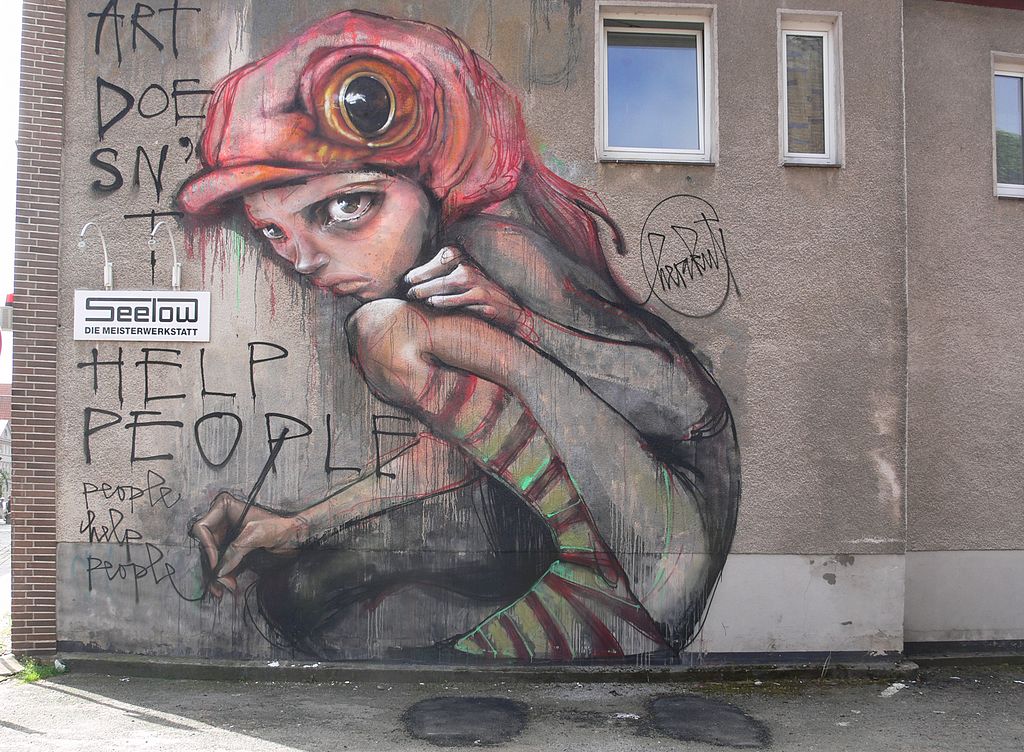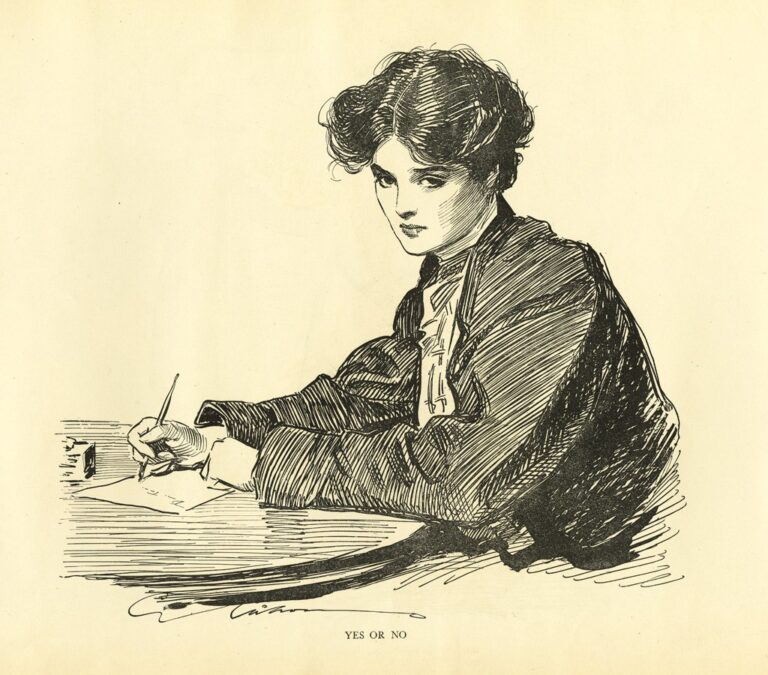Often, it doesn’t feel very creative
—–
Me? A creative person? I don’t think so. Well – not any more.
I’m boring. I used to work in banking and finance law – one of the driest fields around. Then I was a legal translator – which is more about the accurate reproduction of a text in a different language than about creativity. While I might have had to make tough decisions about how to translate this or that word or sentence – it was always someone else who drew the lines which I had to colour within.
These days, I like to drink tea and go to bed at a reasonable hour. I much prefer an evening at home in my pyjamas watching “Only Murders in the Building” than going to a party, or networking event, or bar. Dressing up isn’t my thing either: I have a few outfits that work for me and wear them over and over again. I like my own company, would rather quietly observe than actively participate and spend an inordinate amount of time inside my own head. To me, that doesn’t really say “creativity” so much as “introverted” and “neurotic”.
I always thought of the “creatives” as those unachievably gregarious people on the stage, working in advertising or busily splashing away with their paintbrushes in New York lofts. The ones who produce meaningful, commercially viable art as if on a conveyor belt, being garrulous and extrovert and convincing in their own status as creatives and just generally “WOW”. The ones who dye their hair daring colours and have an affinity for conspicuous eyewear.
That used to be me
Given all of that, you will understand, dear reader, why I don’t feel like I share the same semantic territory.
Which is strange, because I was a very creative teenager. I sang (all the time, quite unabashedly, convinced that people actually wanted to hear me), painted (quite well, actually) and experimented with unusual looks using secondhand, synthetic clothing (which made me look and smell bad).
I often went too far, made a fool of myself and did things that I now cringe to think about. But I was exploring and trying out and creating. And I felt absolutely entitled to do so and share the results with the world.
Then I strangled all of those creative drives in cold blood and hid their corpses in the attic of my life.
Why?
Time to pack your childish things away
Well, it was the end of my legal studies and therefore time to put away childish things like “creativity” and commence the serious business of adult life.
Of course I was aware that you could have a serious creative job. But I struggled to conceive of the long, tortuous process of generating a hundred ideas – most of which won’t ever see the light of day – as “work” that you can charge for because your time is paid. It didn’t seem material or definite enough.
Solving real-life legal problems seemed far more real, less ephemeral; the results more immediate and tangible. And of course it was well-paid, which elevated that feeling of it being “serious” work.
Unserious. Low value. Lack of gravitas. A feeling of childishness. That was how I saw creative work. While I didn’t think people working in creative branches were dumb or inferior (unwind the kinks in my logic at your leisure), they seemed to occupy a whole different plane to me that I either couldn’t or wouldn’t relate to, imagine or fathom. It wasn’t meant for me.
Creative techniques – surely not!
The idea of “creative techniques” confused me entirely. It seemed like a contradiction in terms: surely creativity can’t be summoned on command and marshalled just like that? To me, creativity was resistant to control, like an impish spirit that can only be caught and bottled if you are quick enough when it lands on your shoulder to whisper those groundbreaking ideas in your ear.
As it happens, this divinity-adjacent understanding of creativity isn’t out of left field. In fact, it corresponds to some very old ideas about it which were widespread in such august civilisations as Ancient Greece and Rome.
The Ancient Greeks believed that creativity was down to spirit-like beings called “daemons” who lived in the walls of an artist’s studio. Whenever they felt like it, the daemons would slink out of the stone or plaster, go to the artist and impart their ideas. The artist’s task was to implement and give expression to these ideas gifted to them by the spirits of creativity as best they could.
The Romans also believed in the external and capricious nature of creativity but referred to this elusive force as a “genius”. Therefore, in those times, you were not a genius – you had a genius that benevolently supplied you with ideas.
A timeless idea
Some living artists still believe this. The Turkish author Orhan Pamuk has been cited as believing that his own creativity springs from an external power:
“If I think back on the books to which I have devoted my life, I am most surprised by those moments when I felt as if the sentences and pages that made me ecstatically happy came not from my own imagination but from another power, which had found them and generously presented them to me.”
This belief also finds its way into Pamuk’s literary works. Ka, the poet protagonist in the award-winning “Snow”, refers several times to the feeling of a poem “coming” – as though unwritten poems fly through the ether for the poet to “catch”:
“There arose from these minor items a vision of extraordinary power: convinced that ‘everything in the world was interconnected, that I, too, am inextricably linked to this deep and beautiful world’, he concluded that another poem was on its way, so he stepped into one of the tea-houses on Atatürk Avenue. But the poem never arrived.”
The advantages of outsourcing
As the author Elizabeth Gilbert tells us in her – now classic – TED Talk on creativity, the concept of the “daemon” created a distance between the artist and their own creativity. On the one hand, this acted as a brake on arrogance by barring the artist from claiming their successes only for themselves. On the other hand, it also acted as a psychological buffer from the downwards spirals of depression which can result from the rejection and failure of the artist’s work.
It was only much later during the Renaissance when humanist ideas became prevalent, and the autonomous individual was placed at the centre of the world that the artist was made responsible for their own creative powers.
As Gilbert, a lifelong creative, says: this responsibility for one’s own powers of origination can be overwhelming, paralysing, even deadly if an artist can no longer bear the pressure or inability to work or achieve success.
Furthermore, the concept of creativity springing from an internal source does not adequately capture that feeling described by Pamuk of being touched by something powerful and divine at the moment of inspiration. A sensation which many people have experienced at some point in their lives, whether they describe themselves as creative or not.
That feeling of a great idea coming from absolutely nowhere, at a random and inopportune moment when your mind is occupied with other things – so energising and elevating and enlivening! To put it down to some new neuronal connection in one’s brain seems far too mundane. People need a bit of magic.

My creativity
So what does my creativity feel like? Do I feel liked I’ve been touched by the breath of the divine in moments of inspiration?
No, not especially.
In fact, a lot of the time, my creativity doesn’t feel “creative” at all.
While my other half describes his own creative process as like sinking into soil and allowing his thoughts to spread out wild and tangling like the roots of a tree, I generally feel mine in a much more structured, analytical way.
When faced with a problem – instead of waiting for divine intervention to help me make sense of an amorphous cloud of jumbled information – I stand back and observe the situation. I try to filter out the patterns, correlations and underlying principles governing events, the motivations and interests of the actors involved, and any external influences. I try to find a system. Then, I try to understand how changes in one part of that system will express themselves in others.
Once I understand how the system is working, I can then extrapolate its governing rules to form possible new scenarios, variants and extensions. Yes, it really is that dry.
Oh no – did I kill it?
Now, I often joke that I smothered all trace of my wild creative impulses of youth with the law. But that’s not really true. Thinking about how my creative process works today, it seems that the study and the practice of law has just moulded my mind and changed the way it deals with information, solves problems and synthesises ideas for solutions. It didn’t crush my creativity: it rewired it.
And yes, this adult “legal” creativity feels distinctly rational and preordained, like the clean, movement of levers and pistons along tracks which – once I’ve seen them – seem obvious and preordained, waiting to be uncovered as an archaeologist would unearth a find. Maybe that’s why this sort of creativity doesn’t feel creative as such. It’s more like discovering something which was there all the time.
And when the moment of discovery arrives…well, it doesn’t feel divine exactly, but it does feel very pleasing. Like a complicated lock that you’ve been working on for ages springing open in your hand.
The wilder side
Yet, vestiges of another species of creativity remain with me: one which is far more amorphous and strenuous to deal with. One which is full of doubt and frustration. One which is all about agonising and incremental shuffles forward rather than big confident leaps.
It’s a creativity that happens when I am dealing with abstract notions that are immune to the above-described systemising using LawyerBrain.
Here, rather than identifying a dynamic framework, I feel like I’m trying to pluck relevant thought fragments out of a thick fog or tangled mass by instinct.
If I’m writing, the process starts with a fevered brain dump of all possible thoughts – quick, furious and undiscerning. Then, I attack this raw mass, trying to refine and structure it into a coherent idea or string of ideas which can be expanded on and formed into a coherent piece of writing to communicate those ideas to the reader.
Getting to a finished work is slow, laborious – even painful. To be quite brutal about it, sometimes it’s as if I’m reaching up my nose with my fingers into my brain and pulling the words out of there one by one. I have to leave the piece of writing and come back to it multiple times to shake it all out. This article, for example, took me at least a month to complete.
And even after the work has been published, I’ll come back days – even months – later to add new thoughts, tweak it some more. The work evolves and changes long after it has been let out into the world.

Come here, little bird
This second type of creativity isn’t immune to control – but it’s a tougher bird to attract and hold in the palm of my hand.
Discipline is key in persuading it to come and spend a little time. Just as there is such a thing as creative techniques which you can consciously apply to trigger ideas, so there is such a thing as a creative muscle which you can make stronger and get better performance from if you train it regularly.
Since writing is my favoured medium of creativity, this means making myself sit down and write regularly – every day if possible. Because the more you write, the more often you show up – the better you will become in this craft.
Attitude is also a big factor. To be creative in any way, I’ve got to feel confident in my ability to say something worth listening to. Strong enough to bring tough, uncomfortable stuff out of my mind into the world and stick by it. And there must be a belief in my entitlement to express my thoughts, free of anyone’s permission or judgment.
In other words: to talk the talk, you must walk the walk. I used to think it laughable that you could simply call yourself a writer and so it would be. This kind of “build it and they will come” attitude to creativity seemed completely absurd and pretentious.
And yet it is true. Thinking of yourself as a creative person, thinking of myself as a writer and giving myself licence to occupy that identity space is essential to producing any kind of creative work. It’s very liberating. And it’s opening your hand so that that little bird of inspiration can land on it, should it fly by.
Emotional state
And now – oh, dread! – to one’s emotions and their role in my creativity.
If I’m feeling at all down, depressed or over-tired, it can be very difficult to get to that sweet spot of feeling like what you have to say is worth putting out there. The first few months of this year haven’t been so great for me for several reasons and I’ve found it very difficult to write during this time. Writing meant engaging with these prickly thoughts, so I chose distraction.
It felt pointless. And most of what was occupying my mind was something I wanted to avoid confrontation with.
Which is ironic, because a little bit of emotional agitation is usually exactly what I need to get the creative juices flowing. If there is a lot of feeling swilling around inside me and I catch the right mood, things can move very fast indeed. I can produce awesome volumes and find it hard to stop or slow down.
When this creative rush comes and I’ve suddenly got so much to say and feel positive about it all being out in the world, it’s the best feeling in the world. It makes me feel more alive and happier than almost anything else I know. A true life force.
And sometimes, just sometimes, when it’s all coming to me in such a fury and perfect sentences seem to be out on the screen or paper before I’ve even realised I’m thinking them…then it truly does feel divine.
—–
Related articles:
On returning to writing after a success
Great Art Encounters – “Electric Rider” by Isolde Maria Joham
Great Art Encounters – “Judith Slaying Holofernes” by Artemisia Gentileschi
This is adulting? I never saw these things coming…
Look up! Standing under chandeliers
—–
Image credit: Charles Dana Gibson, illustration for Collier’s Weekly; published in the artist’s collection Our Neighbors
